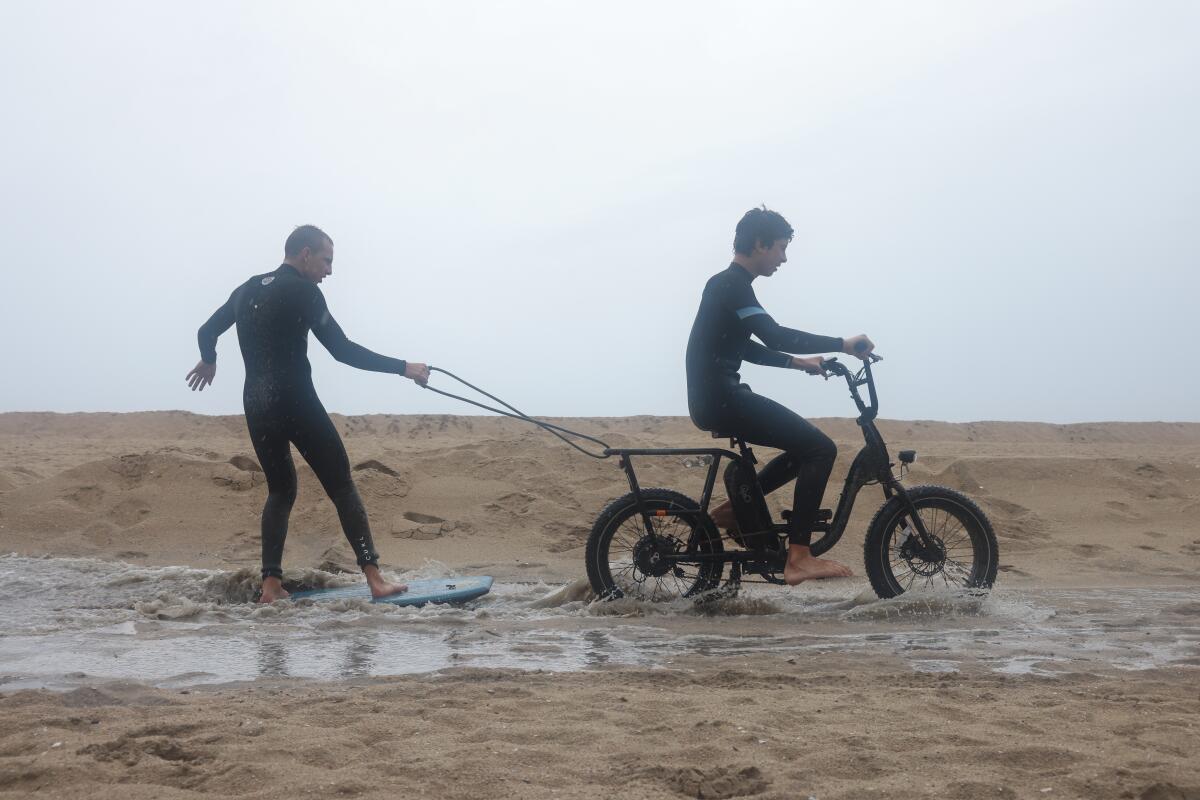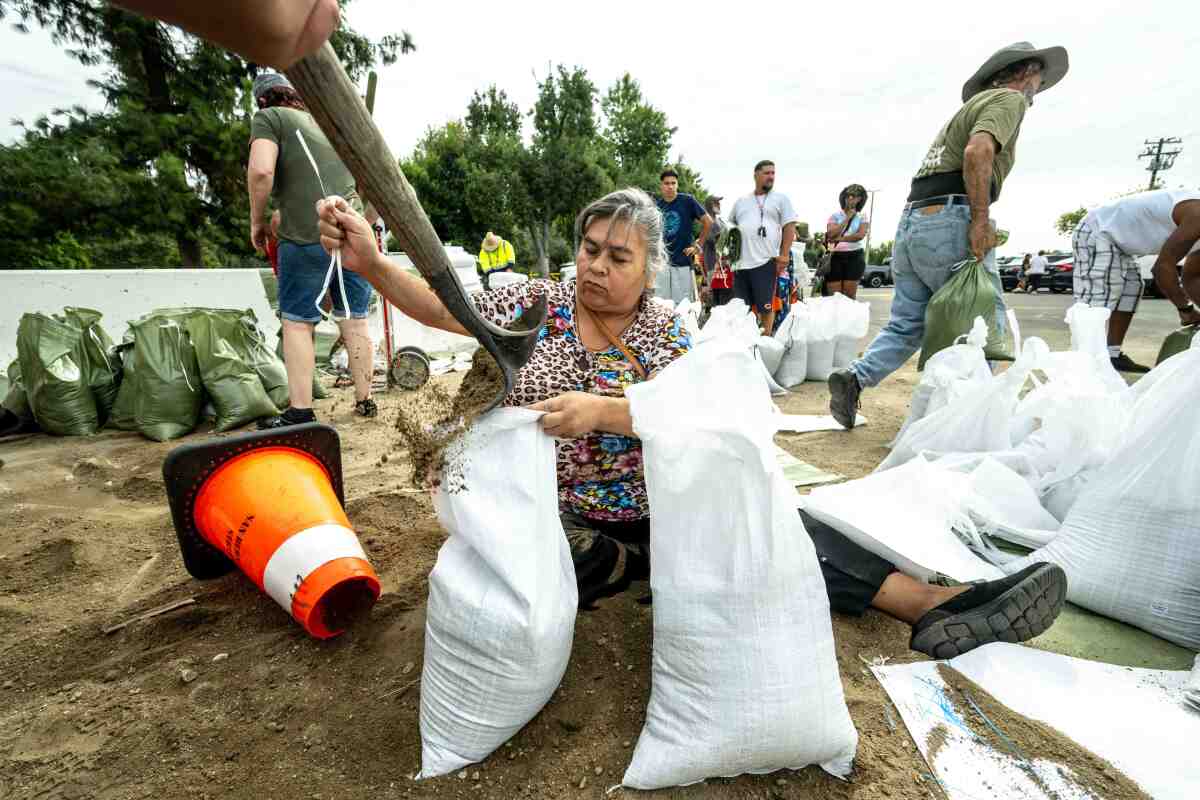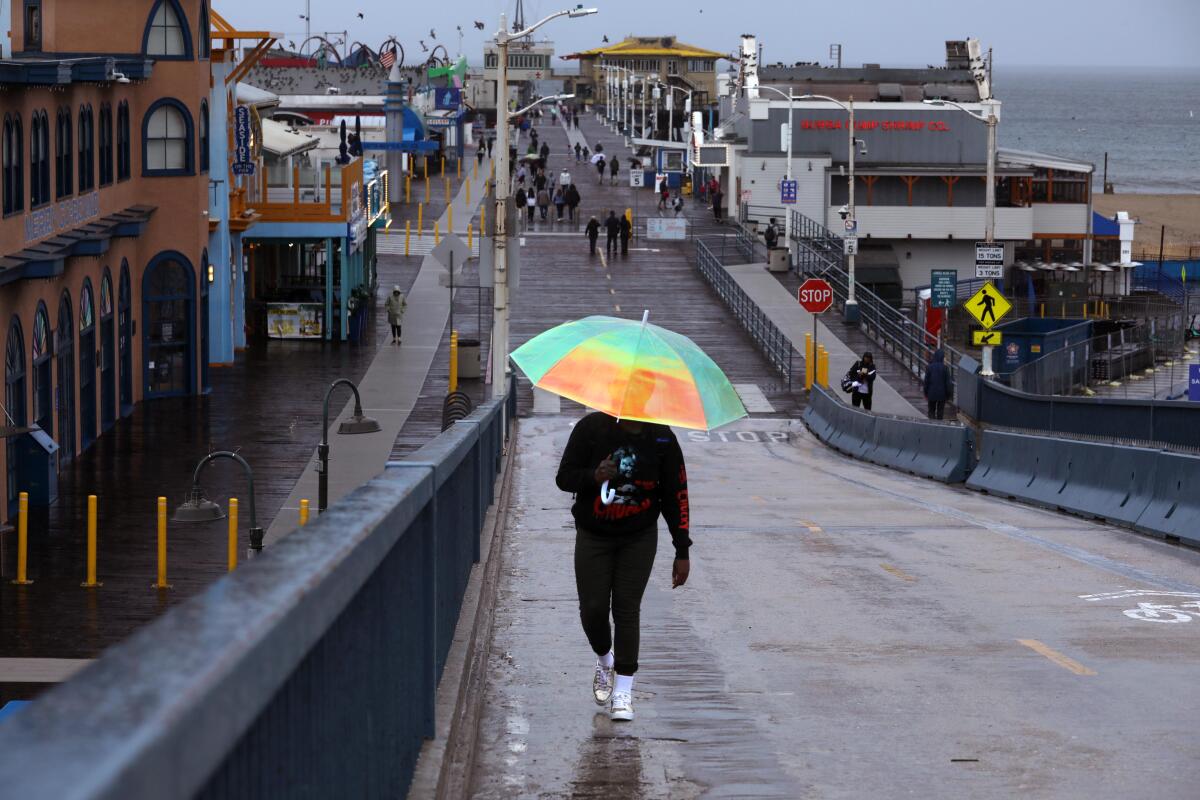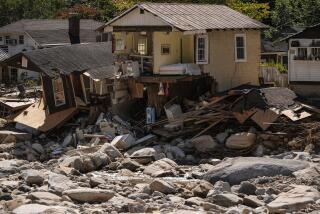Commentary: Complaining that Tropical Storm Hilary was overhyped? Welcome to the club, L.A.

We’ve found it: The one trend where the Californians are the late adopters.
Now that Tropical Storm Hilary has washed over Southern California and the major population centers aren’t underwater, the time-honored East and Gulf Coast traditions of second-guessing meteorologists, local officials and the media made a second landfall as clouds cleared Monday.
“As a girl who grew up in Florida I’m well versed in Hurricanes and tropical storms... and I must say I am completely appalled at the way the media handle this storm,” one commenter wrote on an L.A. Times post about Tropical Storm Hilary wandering over Compton and Dodger Stadium before disintegrating. “The fear mongering and sensationalism was absolutely pathetic by Saturday night, it was obvious that it had downgraded to a tropical storm, yet the media, the weather channel, etc.…”
First of all, we should count our blessings that Tropical Storm Hilary wasn’t a Hurricane Katrina-level disaster for a region that hasn’t seen a tropical storm since the one that hit Long Beach and San Pedro in September 1939, killing 45 people across Southern California and another 48 people at sea. As of Monday, the worst of the storm’s effects seemed to land in the San Bernardino Mountains, where debris and mud flows from heavy rains around the communities Forest Falls, Oak Glen and Seven Oaks cut off roads for some local residents.
But we should reflect on what was unique about the tropical storm for Californians and why it’s important to stay humble, even if your patio chairs didn’t get blown over this time.
It’s an East Coast luxury to get several days of warnings that a potential disaster is coming. And it’s an East Coast luxury to be able to complain after the fact that even Hilary’s record rains weren’t worth the hype.
To the extent legacy media outlets (like the one you’re reading) play a role in the public’s experience of a potential impending disaster, it’s usually to echo the prognostications and warnings given by government officials and well-established academic experts. For the record, forecasters warned that Hilary was likely to weaken to a tropical storm by the time it reached California but that rains would probably be most dangerous in inland desert and mountain regions, and that’s largely what happened.
But storm forecasts are luxuries the West Coast won’t get for the Big One.
Mobile phone shake alerts are not going to give you enough time to go the grocery store to stock up on those batteries, flashlights and canned foods that you wouldn’t have had on hand if Hilary had never arrived and that 5.1 Ojai earthquake on Sunday was a couple disastrous magnitude points stronger.
There also won’t be media coverage to complain about after the Big One, unless it’s to complain about the lack of overall coverage keeping public officials and the general public on their toes. (The Times is trying to do our part, like with our Unshaken guide to earthquake readiness and resilience.)

Hindsight itself is a kind of luxury as well as a curse. Nobody knew Maui was going to be the site of the deadliest wildfire in modern American history until after it happened earlier this month, but now we know that there were warning signs that should have been attended to.
Since the business of hurricane forecasting and the problems that come with it are a little less familiar to us in the Southland, perhaps we should look to hurricane country for some wisdom on how to process the way we collectively handled Hilary.
“No two emergencies are the same,” cautioned Denise Chatam Walker, a Long Beach native who now serves as chair of the Greater Houston Local Emergency Planning Committee in Texas. “Even here in Houston, we’ve had storms where people felt that, ‘Oh, it’s more hype than what actually occurred.’ But you can’t be too prepared.”
One of the things Southern California skipped on this storm was a large-scale evacuation order, which is one of the most consequential decisions that public officials can make in the face of a hurricane. (Local officials handed down some more localized evacuation notices for Catalina Island and in parts of the San Bernardino Mountains.)
In 2005, as Hurricane Rita barreled toward Texas — right after Hurricane Katrina devastated New Orleans — millions of people tried to flee the coasts, jamming the roads. The evacuation attempt itself became a bigger disaster than the storm, thought to be linked to more than a 100 of the 119 deaths associated with Rita, and led to reforms in evacuation procedure.
On the other hand, academics have raised concerns that residents in storm-prone areas like Galveston, Texas, are so willing to discount media “hype” about impending hurricanes that many won’t evacuate when they really should — say, in the face of a 13-foot storm surge.

For Californians, Chatam Walker still sees the upside in last week’s disaster prep.
“The good news is it gets people thinking about, ‘What if this happened really bad? What would I have done? What medication do I have? Where do I go? How far inland do I have to go?’” said Chatam Walker, who previously served as the chief emergency management officer of Lone Star College and has written about mass disaster communications. “It also gets the community to realizing not everyone can afford to have an emergency kit, not everyone can afford to get in their car and go somewhere. They’re dependent on the community to help them in an emergency.”
For Angelenos wondering if they overprepared for Hilary or if the warnings were overblown, Chatam Walker had some advice.
“Use it as a learning opportunity,” Chatam Walker said. “How prepared were you before you heard the message? A lot of what applies for earthquakes also applies to hurricanes. Do you have your emergency documentation? What’s your plan for your pets? For your elderly, for your nursing homes, can you move to higher ground quickly? A hurricane gives you a lot more time to prepare than an earthquake does. If it happened this time, it will happen again. We just don’t know when.”
Just don’t say we didn’t warn you.
More to Read
The biggest entertainment stories
Get our big stories about Hollywood, film, television, music, arts, culture and more right in your inbox as soon as they publish.
You may occasionally receive promotional content from the Los Angeles Times.











